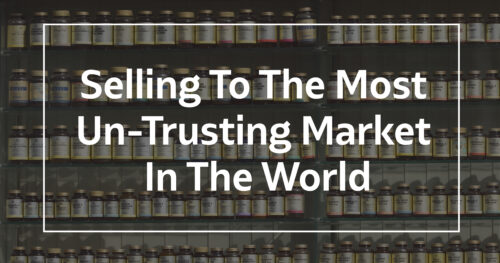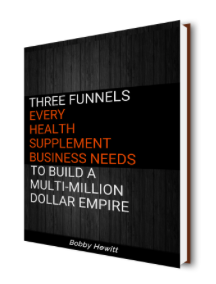Creative Thirst has been optimizing websites for over 9 years. We have narrowed our focus on the nutritional supplement vertical for the last 6 years of those years. It’s a marketplace that has obstacles like no other. It’s also a particularly hard crowd to sell to.
One of the biggest hurdles for businesses in the natural supplement industry is that they’re not legally able to make claims for dietary supplements. There is a certain way to work within the guidelines for a dietary supplement product. And in many cases, it’s a gray area of interpretation. (That’s why there are lawyers.)
You certainly always want to stay on the legal side of what’s right and ethical. But without benefits – you don’t have anything to sell.
Yet, the audience is looking for answers to their problems. They don’t know if your supplement is the one that’s going to finally do the trick. Or if it’s just another powder in a pill.
There’s so much misinformation out there, that dietary supplement customers are on the skeptical side.
It’s your job to convey to your customers that you truly have their best interest at heart. That you really want to help them solve their problem.
The 4 Factors Needed To Break Through the Wall
There are 4 factors that you must keep in mind when trying to break through to a sale. These factors are desire, hope, trust and belief. And here’s why these factors are different when selling in the health environment.
The Pushing Forces of Desire and Hope
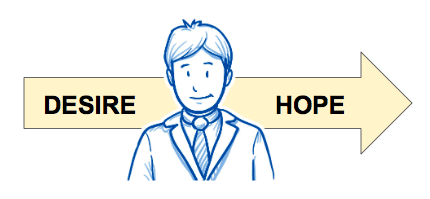
Most decisions start with some pushing force. Typically, the buyer in this vertical is at a place where nothing is working for them. This creates a pushing force in the direction of seeking change. They desire change and they have enough hope to believe that change is possible.
The buyer realizes that they need to do something different. And this force will work to your advantage if you can show them that you have something different.
Customers in this vertical spend a large amount of time in the desire and hope phases before they can move forward into the belief and trust phases.
They spend a lot of time gathering information to solve their problem. Not to mention, there is a lot of information out there to be gathered. So they must first sort through it all before they can even begin to think about which supplements they believe will work.
This isn’t the same as buying a coffee maker or a golf club. Consumers know what these products are intended to do – make coffee and hit a golf ball. And if they don’t do what they say they will do – they can return them.
With health products, it gets a little bit murky. Are the supplements working? Do we have proof? Sometimes the proof can be subjective. As in a placebo effect. I feel better – so they must be working. Or, I don’t feel better – so they must not be working.
A lot of the results can be in the users own mind.
Regardless of the effectiveness, it’s the desire for the new solution that creates the motivation for them to move forward…
And hope is the fuel for desire.
Both these forces push the prospect forward. Yet the pushing force comes from the prospect, Not the marketer. Desire and hope cannot be created. All the health marketer can do is intensify those pushing forces. But first they need to identify them in the marketplace.
Here’s an example of identifying the forces:
Target Customer Segments: Cross fit / (Spartan Race / Tough Mudder) / High-Intensity Interval Training (HIIT) / Cardio and endurance athletes
Desire: Achievement – They are struggling to beat their personal best, yet they are in shape and workout regularly.
Hope: Inner Strength – That they have the inner strength to reach their full potential.
Once identified the key is to iterate through A/B testing to quickly find what works best.
The push of desire can be tested with hooks and copy around concepts like:
- Push harder, train longer, and achieve more.
- Reach your full potential—in your body and in your life.
The push of hope can be tested with concepts and images around:
- Surpassing your limits.
- Stepping outside of your comfort zone.
The Pushing and Pulling Forces of Trust and Belief
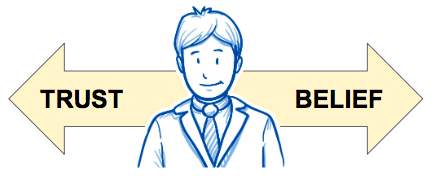
Belief is a tricky thing because our previous experiences shape our perception of what we find to be believable.
Belief is something that comes from within. First we believe and then we seek things that support that belief. It doesn’t happen the other way around.
It’s an uphill battle trying to change your prospects belief. So don’t do it. Addressing their already existing values is a better way to market to this audience.
Belief is the foundation for selling health products online and is expressed best in this formula.
Belief = (Desire x Self Story) / Challenges
Belief is based on one’s own individual desires and self story. We tend to believe that which we desire.
Our self story is the narrative that we tell ourselves about our situation and about ourselves as individuals.
Continuing with the Cross fit / Spartan race target market example. One of the beliefs this market has is that : They are in total control of their full potential.
Ultimately, our “self story” will either increase our desire or diminish it.
If your dietary health product does not tap into their already existing beliefs it can’t continue that “self story” conversation that’s already going on in their mind.
And per the equation, once the desire is amplified with self story (Desire x Self Story) it is the level of challenge in front of them that needs to be overcome. If the challenge is too great their ability to move forward with a purchase will be stalled.
Trust counts on belief and logic. If the product seems logical then the prospect moves leans towards the direction of making a purchase.
Here’s what logic looks like….
“Our supplement contains A, B and C which have been shown by scientific studies to help support the body ability to do (X), which supports (Y) problem.”
Here’s what logic doesn’t look like…
Take our supplement 3 times a day and you’ll lose body fat and improve bladder function and enjoy better memory retention.
In this latter example, there are blatant claims which are not allowed for one. But also, so many things are being cured at the same time that it might seem less logical that it could actually work. Whereas the first example is backed my some research.
The way we look at Trust is expressed in the equation below.
Trust = (Logic + Belief) – ((Anxiety x Credibility) – The Other Party’s Self Interest)
If your sales argument makes logical sense and it’s aligned with the inner beliefs of your prospects you’re on your way to building enough trust to buy.
Trust however, can easily be reduced by the prospect’s anxiety and the amount of credibility you portray. Your own self interest will also be a key factor in reducing trust.
When it comes to buying, the health market is extremely sensitive. At times it’s like walking on egg shells. If you’re messaging is too salesy, the weight of the right side of the equation is tipped. Your self interest in over committing to the sale reduces trust. Leaving the prospect to walk away or fail to make any decision at all.
Moving To A Purchase
This framework has been developed from our experience and research in working with health companies. From the insight that people don’t buy health products the same way they buy other products online.
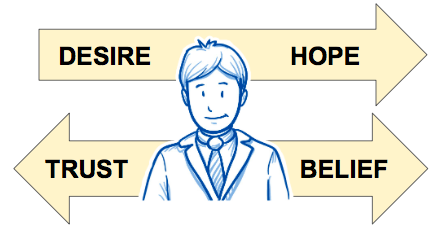
Hopefully, you’re now able to see why all four factors of desire, hope, belief and trust are crucial in getting an un-trusting and leery audience to move forward with a transaction.
It starts with the prospects own inner desires and hopes and then ends with you in conveying that your product is believable and they can trust that it will solve their problem.
Once you can combine those variables to tap into the push of desire and hope, then utilize a push pull effect, of trust and belief, much of your resistance has been conquered.
Discover the 3 funnels that can help your health supplement business succeed.
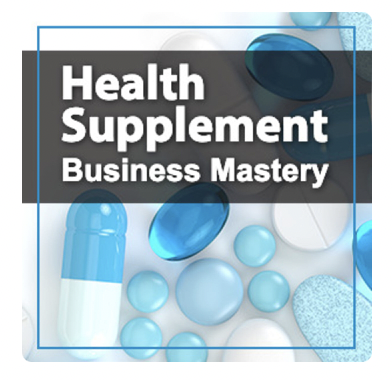
Listen to the Health Supplement Business Mastery Podcast for for dietary supplement entrepreneurs and marketers.
